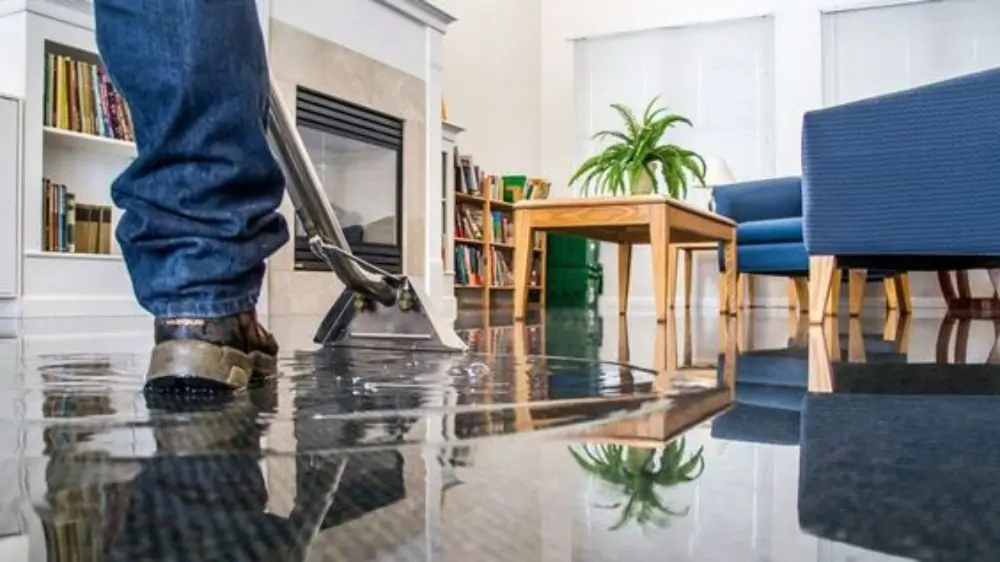One of the first rules of water damage restoration is that the most effective way of removing water is physical extraction. But how much faster is extraction at removing water than dehumidifying? About 1200 times faster! A typical truckmount sucks up about 25 gallons of water per minute, while the best dehumidifier only removes about 30 gallons a day. Efficient extraction is vital when it comes to getting jobs done quickly because every gallon of water left behind requires at least one hour of dehumidification to remove. So every drop of water you eliminate is critical.
Using the correct tool is essential. For instance, when using only a light wand to extract, up to 1.5 gallons of water may remain in every yard of carpet and pad. In a 1400 sq. ft. house, that could add up to over 230 gallons left behind. A dehumidifier would have to operate for over 180 hours to remove that amount of water. That’s why it’s best to use a weighted, heavy-duty tool rather than a standard wand.
A ride-on weighted sub-surface extractor will have better results when used in conjunction with smaller, manually moved, step-on-step-off ones. Why? Because the bigger units are great for open areas, they work faster and are less labor intensive. But the manual units are perfect for steps, insets, and closets – places where larger units can’t go.
A poor extraction job will also lead to higher humidity levels for a longer time causing secondary damage and mold growth, not to mention that it slows down the whole drying process. So to make sure you get every drop possible, here are a few more tips:
- Use the shortest length of the hose between the tool and the extractor. For every extra foot of hose length used you lose about one CFM in vacuum flow.
- If you’ve got 300’ of hose on your reel but you’re only using 100’, then hook the last section you need directly to the blower. Every bend in the hose impedes flow and this can be as much as 90 percent in a hose coiled on a reel.
- Two-inch hoses are standard in the industry, but any attachment or adapter that is smaller in diameter will reduce the flow potential to the level of the restriction.
- If a carpet is salvageable, remove the pad and re-extract the carpet after pad removal. This has been proven to speed drying. Test the corner of the room to ensure the extraction has been done to the point where no more water can be squeezed from the pad.
- For hardwood floors, use floor panels connected to extraction hoses that are designed to remove water and minimize damage. On hard surfaces, squeegee the water to a central point and then extract with a hose or wand with a protective cover.
- Properly maintain floor tools and extractors to keep them working at top efficiency.
Making the extra effort to ensure that your extraction methods and equipment are the best they can be will save you and your customers untold time, cost, and frustration.

